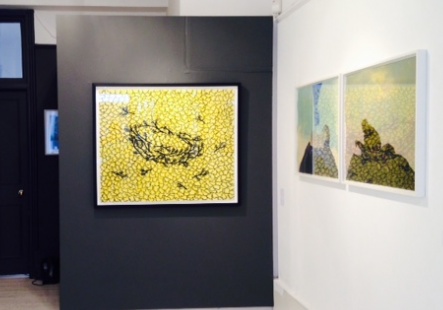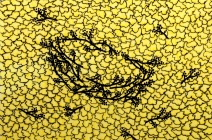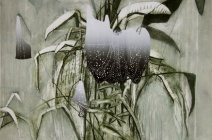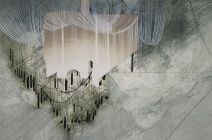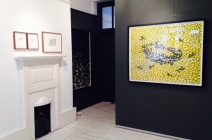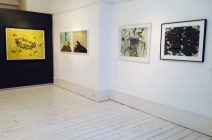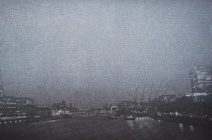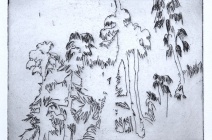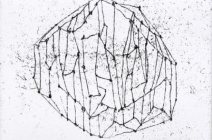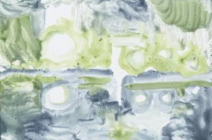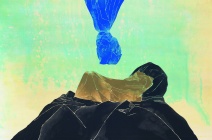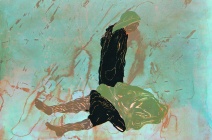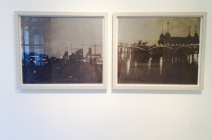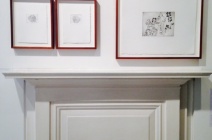The Terrarium Drawn
The Terrarium Drawn
Lucy Bainbridge, Hen Coleman, Katherine, Jones, Tamsin Relly and Michael Taylor.
Prints and works on paper created in response to fragile
environments.
Envisaged by Katherine Jones
The Terrarium Drawn explores the evolution of environments, both natural and fabricated, global and domestic. All five artists use drawing as a fundamental part of their practice in order to grasp an idea and to explore its development.
Lucy Bainbridge depicts manmade environments in constant flux, while Tamsin Relly draws from her first-hand experience of ‘wilderness, erased or constructed for industry or leisure’ during recent research trips to the Arctic Circle and Las Vegas. Michael Taylor uses ‘a process of layered construction’ to attempt an understanding of how an image derives its meaning. Hen Coleman examines contrasts in ‘the terrain of chaotic and abundant nature’ as the basis for exploration.
The artists have been drawn together for this exhibition by Katherine Jones, an artist whose own work shares common themes with each. Her recent images reflect the gradual integration of unfamiliar plants, adapting to environmental and atmospheric changes, renewing the balance and diversity of domestic flora and fauna.
Hen Coleman is a British artist, born in Venezuela. She is a graduate of the Royal College of Art and a current printmaking tutor at The Royal Academy Schools. Her work has been shown in various London galleries and is included in private and public collections in the UK and the USA. Her drawings depict altered territories informed by landscape in which the protagonist’s role is carried by recurring motifs of vessels as containers and layered natural forms in transformed states. ‘The contrast between a terrain of ‘chaotic and abundant nature’ and the more measured environment of our ideas and behaviour presents itself as a dialectic, a third territory, not necessarily geographical or historical but an unfolding space or stage for playing out memories, responses and reactions.’
Lucy Bainbridge’s work attempts to soften a city constantly undergoing change and renovation, bringing it briefly to a pause. Using only the limited light and relative calm of the capital shortly before dawn she invites the viewer to reflect upon their individual interaction with the city and its architecture. The images combine photography, multi-layered screen-print, graphite dust and drawing and are regularly exhibited both in the UK and abroad.
Michael Taylor is an artist and master printmaker. His work is held in public and private collections both in the UK and abroad. He begins with the snapshot or found image, and takes it through a process of layered construction, using drawing and printmaking. Emerging elements are then elevated to become the central motif. His work concerns the way in which the viewer ‘negotiates a path towards a comprehension or understanding of what seems to be before them’, through a ‘halo of meaning’. Context, both the viewer’s and that of the image, creates this meaning. Removed from its original environment, an image’s ability to reveal the specific becomes fluid and tenuous.
‘The nothing that is there and the nothing that is not’. Wallace Stevens
Tamsin Relly’s practice reflects on the increasingly disrupted weather conditions of a shifting global climate and explores notions of wilderness, erased or constructed for industry or leisure. She draws on first hand observations from diverse locations such as receding glaciers in Svalbard in the Arctic Circle; displaced wildlife in zoos; and the fabricated oasis of Las Vegas. Working with the fluid and unpredictable qualities of her materials and processes, Relly presents impressions of both urban and natural environments in states of uncertainty or impermanence. Her work is included in international collections and recent residencies include the National Maritime Museum, London and the Rockefeller Estate, New York.
Katherine Jones’s series builds on earlier work depicting protective, membranous buildings housing fragile environments. Vast greenhouses, first constructed to provide shelter to the transplanted species brought in via the ‘voyages of discovery’, during the early to mid the 1800s. These plants were at first kept alive under specific conditions, heated or protected under glass while fragile and unstable. Luminous Flower acknowledges the gradual integration of these unfamiliar plants into the English land and cityscapes - adapting to environmental and atmospheric changes to renew the balance and diversity of flora and fauna. She is the recipient of numerous awards, has exhibited widely both internationally and in the UK and has recently completed a residency at Eton College, Windsor.

